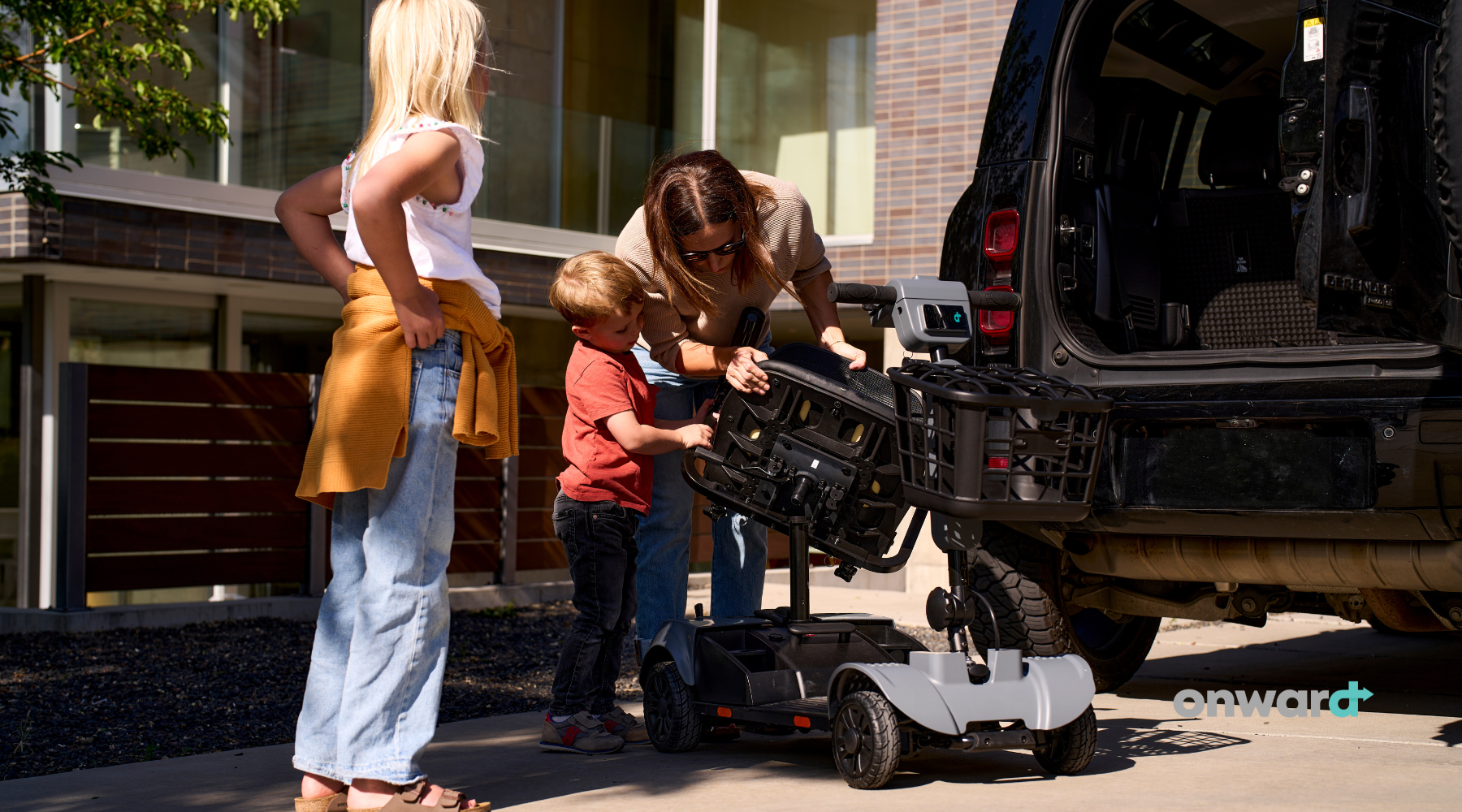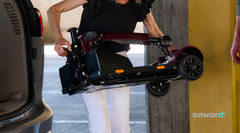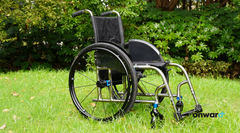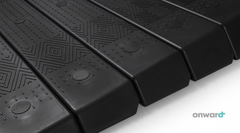Travel Easy with the Lightest Portable Mobility Scooter

Travel should be a source of joy, not stress. Yet, for many people who rely on mobility aids, planning a trip can feel overwhelming. How do you get through the airport smoothly? Will your scooter fit in the car trunk? Will it hold up during a road trip? At Onward Mobility, we understand these concerns, and that’s why we’re passionate about helping people find the lightest portable mobility scooter to make travel simpler and more enjoyable.
In this guide, we’ll walk you through the common challenges, solutions, and insider tips for traveling with lightweight scooters. Whether you’re headed to the airport, cruising down the highway, or exploring new destinations, you’ll discover how the right scooter can help you move with confidence and freedom.
Key Takeaways
-
The lightest portable mobility scooters are designed to reduce travel stress by being foldable, easy to lift, and airline-approved.
-
The best travel scooters weigh around 25 to 40 lbs, making them manageable for most users.
-
Look for travel-ready features such as removable lithium-ion batteries, compact folding designs, and a good range.
-
Smart packing, storage, and routine maintenance keep your scooter safe and reliable during trips.
-
Choosing the right scooter means more independence, less hassle, and more time enjoying your adventures.
Travel Challenges and Solutions
Traveling with a traditional mobility scooter can be tough. Many models weigh 80 pounds or more and don’t fold down, which makes lifting them into cars, taxis, or shuttle buses nearly impossible without help. And if you’re flying, airline rules about batteries and storage can add another layer of stress.
That’s where the lightest portable mobility scooter changes everything. By combining smart design with portability, these scooters solve the most common travel hurdles:
Heavy lifting and storage issues
Lightweight scooters weigh as little as 25–40 lbs, meaning you—or a travel companion—can lift them into a trunk or overhead storage without too much effort. Many models fold down to the size of a small suitcase or come apart into smaller, easy-to-carry pieces.
Airline restrictions
Air travel is easier with scooters that have removable lithium-ion batteries. These batteries are designed to meet airline regulations, so you can remove them, carry them onto the plane, and check your scooter hassle-free. Always double-check your airline’s battery watt-hour limit, but most travel scooters are designed with this in mind.
Tight spaces
Airports, hotel rooms, cruise cabins, and rideshare vehicles don’t always offer much room. A scooter that folds or disassembles ensures you’re never stuck trying to squeeze into an awkward corner.
Wear and tear
Frequent travel exposes scooters to bumps, scuffs, and even weather damage. Choosing a scooter built with durable materials and practicing basic maintenance helps you avoid unexpected breakdowns.
Best Scooters for Airports and Road Trips
When it comes to selecting the best scooter for traveling, there’s no one-size-fits-all answer. Your choice depends on your needs, preferences, and travel style. Still, there are common features that make certain scooters stand out for frequent travelers.
Features to Look For
-
Ultra-lightweight build: The gold standard is a scooter that weighs under 40 lbs. Some models go as low as 26 lbs, which makes handling far easier.
-
Folding or disassembling design: If you’re traveling alone, folding is usually simpler. If you have help, disassembly might be fine, since the scooter breaks into lighter parts.
-
Removable, airline-approved battery: Lithium-ion batteries that are under airline watt-hour limits make flying much easier. Being able to detach the battery for security checks is a game-changer.
-
Range and speed: A scooter designed for airports doesn’t need a 20-mile range, but if you’re road-tripping or sightseeing, you’ll want something that can last all day without constant recharging.
-
Comfort and stability: A scooter might be lightweight, but it still needs to support your weight comfortably. Check for features like padded seats, sturdy tires, and anti-tip wheels.
Real-Life Examples
-
Journey So Lite Folding Scooter: Journey Lite is around 40 lbs without the battery, quick-fold design, and is great for sightseeing trips.
-
SuperHandy Passport: Just 26 lbs, folds easily, airline-friendly battery.
-
SmartScoot and HandyScoot: Roughly 40 lbs, can be broken into lighter parts, with a solid range for day trips.
At Onward Mobility, we focus on offering scooters that bring these qualities together: lightweight yet durable, comfortable yet compact, and always travel-ready.
Packing and Storage Tips
Even the best scooter benefits from a little planning before a trip. Here are some tried-and-true tips from frequent travelers:
-
Practice at home: Before you leave, fold and unfold your scooter a few times to get the hang of it.
-
Carry small tools: A basic set of wrenches or screwdrivers can help with quick adjustments.
-
Protect your battery: Keep terminals covered and store it in your carry-on when flying.
-
Use covers or padding: A scooter bag or soft cover prevents scratches during transit.
-
Label your scooter: Adding your name and contact info can be a lifesaver if baggage handlers misplace it.
-
Secure in vehicles: Use straps or mats in your car trunk to keep the scooter from shifting around.
Maintenance for Frequent Travelers
Keeping your scooter in top shape means fewer disruptions when you’re on the road. Here are simple habits that make a big difference:
-
Battery health: Charge before traveling and avoid draining it completely. Store it in moderate temperatures.
-
Check parts often: Inspect wheels, brakes, and hinges regularly. Tighten bolts if they feel loose.
-
Clean after trips: Dust, dirt, and salt can corrode parts. Wipe your scooter down after use.
-
Inspect tires: Check for worn tread, especially if you’ve been on rough ground.
-
Have spares: Pack extra fuses, a small toolkit, and contact info for service providers along your route.
Conclusion
The right scooter doesn’t just make travel possible; it makes it enjoyable. Choosing the lightest portable mobility scooter gives you freedom, confidence, and independence, whether you’re jetting off to visit family, embarking on a road trip, or exploring a new city.
At Onward Mobility, our goal is to provide scooters that combine convenience, safety, and comfort, so you can focus less on logistics and more on making memories because every journey deserves to be easy.
Frequently Asked Questions
What is considered the lightest portable mobility scooter?
Scooters weighing under 40 lbs (or breaking into manageable parts) qualify as lightweight. The lightest models weigh as little as 26 lbs.
Are all lightweight scooters airline-approved?
Not all. Look for models with removable lithium-ion batteries under the airline’s watt-hour limit. Always confirm with your airline before flying.
Can lightweight scooters handle outdoor terrain?
Yes, many can. While they’re great for smooth pavements, some models also handle uneven ground. Check the wheels and suspension before purchase.
Will my scooter fit in a standard car?
Most lightweight travel scooters are designed to fit in car trunks once folded. Always compare the folded dimensions to your vehicle’s space.
How often should I maintain my scooter if I travel often?
Inspect before and after every trip. Check the battery, brakes, and tires regularly. A professional servicing once a year is also recommended.








Leave a comment